P6C Super Merlin, first flown in late 1943.
The P6C was the final variant of the venerable P6 Merlin. The "Super Merlin" was a HUGE improvement over the original P6A's and P6B's. The new Super Merlin completely swapped out the 2,600HP R-2800 for the more powerful 3,500HP Wright R-3350 Duplex-Cyclone. Because of the new engine, the P6C sported a new engine cowl. A large, more aerodynamic prop hub was also installed, maximazing aerodynamics while still allowing cooling for the engine. The turtledeck was completely removed, and a new bubble canopy akin to a P-51 replaced the old cockpit. Another fantastic improvement, were clipped wings with small winglets which greatly inhanced stability especially at high-rates of speed. However 2 weapon pylons were removed because of the clipped wings. With the new R-3350, the Super Merlin was more efficient, had better acceleration, more available power, and the Super Merlin didn't need to use WEP as much and was more self-reliant on it's own power, making the engine last much long since WEP isn't abused as much. Despite carrying less fuel because of the clipped wings than the P6B, the P6C makes up for it by being more fuel efficient since it doesn't need WEP to go zoomy-zoom-zoom. Another innovative feature was retractable ladder steps to reduce drag.
Overall it was the fighter the PAF was looking for. While it didn't exactly sport dogfighting prowness at low-speeds, it was an excellent high-altitude "boom & zoom" fighter, perfect for bomber escort and high altitude interception. It reached a speed as high as 540 MPH (469 Knots), making it possibly the fastest fighter of the WW2 period. The Supermarine Spiteful only reached 494 MPH, and the Do-335 Arrow only reached 474 MPH. This gave it the nickname "Silver Bullet" by many of it's crews and pilots. Any attempt to replace the P6 quickly evaporated as the P6 fully matured into a great fighter, and became the BAF's worst nightmare. The P6's story is much like the F4U Corsair: A fighter that wasn't loved at first sight, but when it fully matured it was adorned by it's crew and pilots. Pilots also joked about how the P6 went from Corsair to a Mustang (With the new bubble canopy and clipped wings, the P6C looks a lot like a P-51D Mustang with a big radial).
The P6 in total was produced from 1941 to 1952 including all variants.
HOW TO PERFORM A "CARRIER LANDING":
Drop flaps to full, press G to extend the landing gear, which also drops the tailhook, and keep prop pitch at max for max power. It's a good idea to keep WEP on standby by pressing AG-1 incase of a go-around. Keep your speed high on approach (between 130-115 MPH), don't fly too low, or too high, and right before touching down, reduce power, pull the stick aft all the way back, and at the same time press either AG-3, 4 or 5 to activ vate the drag chutes (as if you caught a wire in the trapping). If you landed safely, immediately discard the parachute by deactivating which ever parachute activation group you selected (either 3, 4 or 5.). Really hard to nail, but it's the closest I could get to simulating a real carrier trapping.
Enjoy and happy flying!
G = Landing Gear/Tailhook/Step Ladders
AG-1+MAX THROTTLE = WEP (War Emergency Power)
AG-2 = Drop Center External Fuel Tank (If Equipped)
AG-3 = First Parachute set for carrier landings
AG-4 = Second Parachute set for carrier landings
AG-5 = Third Parachute set for carrier landings
AG-6+TRIM UP = Fold Wings, vise versa to unfold.
AG-7 = Landing Lights
AG-8 = Nav, Beacon, Strobe Lights
VTOL Slider = Constant Speed Prop
Trim Slider = Flaps (Trim Slider Down for Extending Flaps, Vice Versa for retracting Flaps)
Specifications
General Characteristics
- Predecessor PAC P6A Merlin -Foldable Wings & Working WEP!
- Created On Windows
- Wingspan 29.8ft (9.1m)
- Length 27.5ft (8.4m)
- Height 11.6ft (3.5m)
- Empty Weight 4,728lbs (2,144kg)
- Loaded Weight 7,408lbs (3,360kg)
Performance
- Power/Weight Ratio 1.82
- Horse Power/Weight Ratio 0.472
- Wing Loading 40.0lbs/ft2 (195.5kg/m2)
- Wing Area 185.0ft2 (17.2m2)
- Drag Points 4154
Parts
- Number of Parts 109
- Control Surfaces 9
- Performance Cost 887

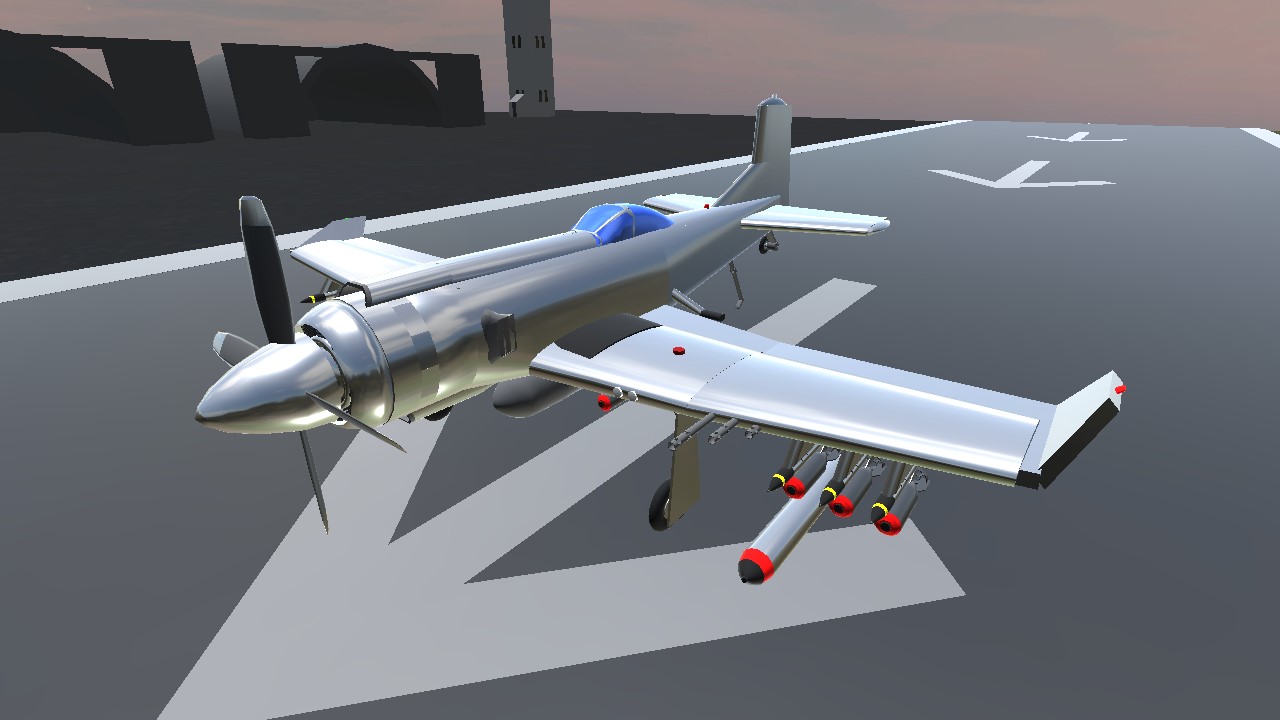
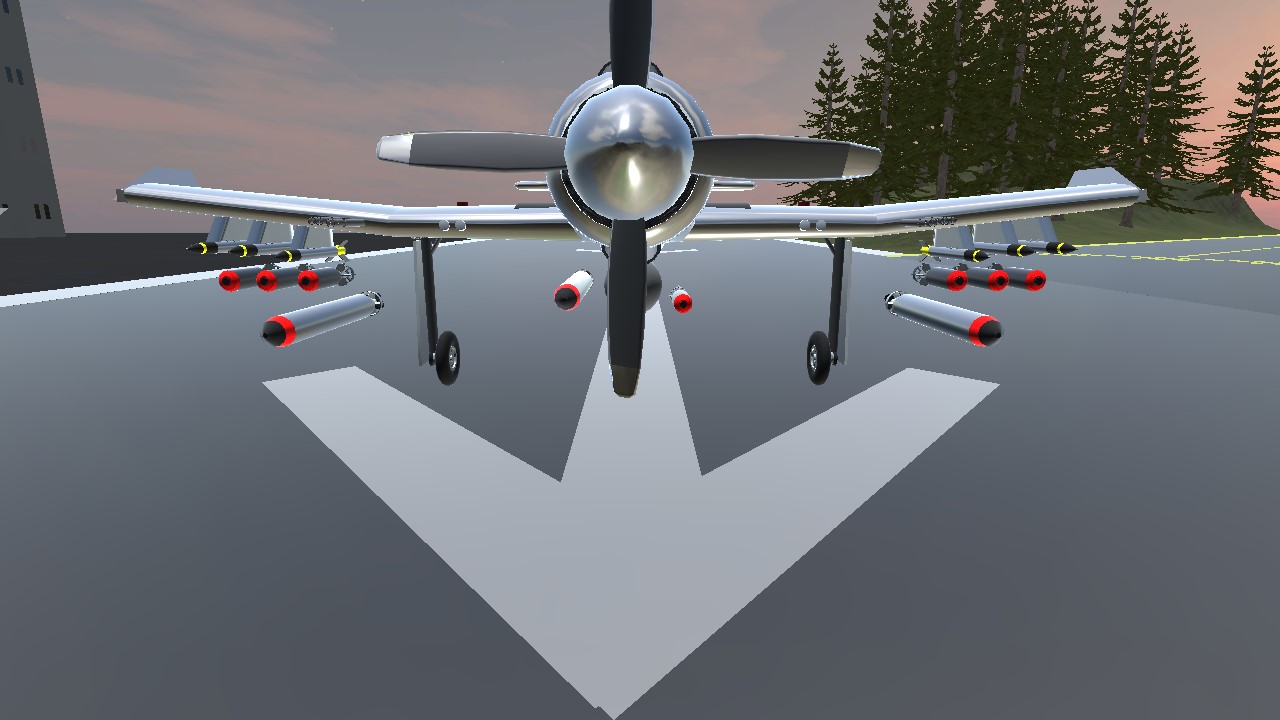

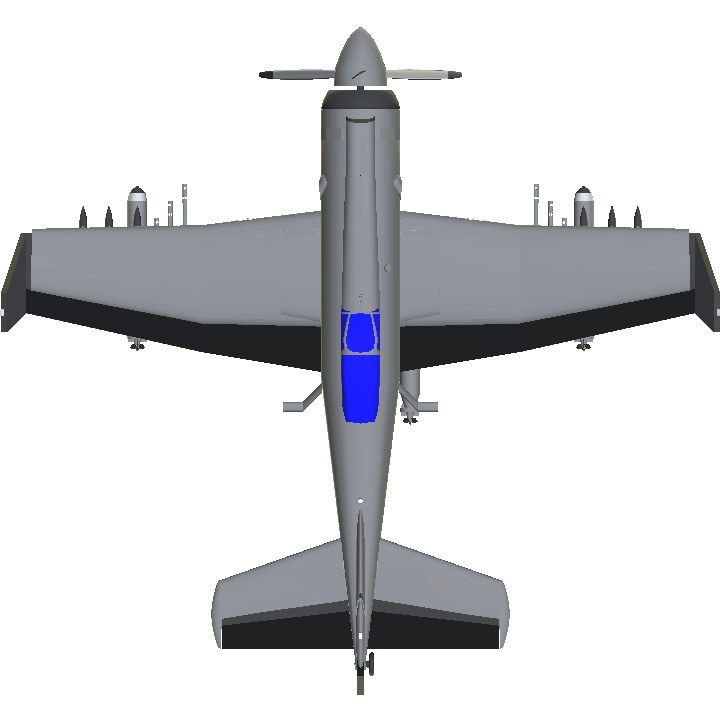
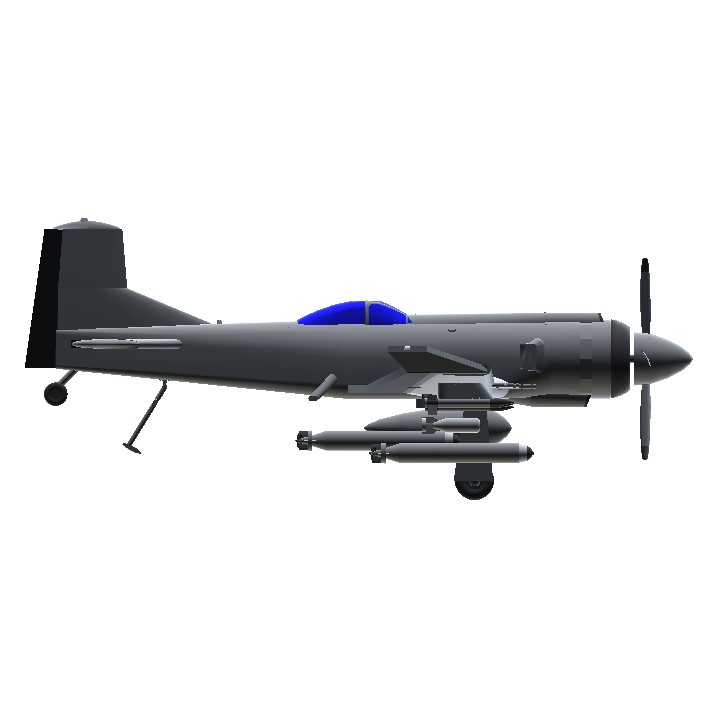
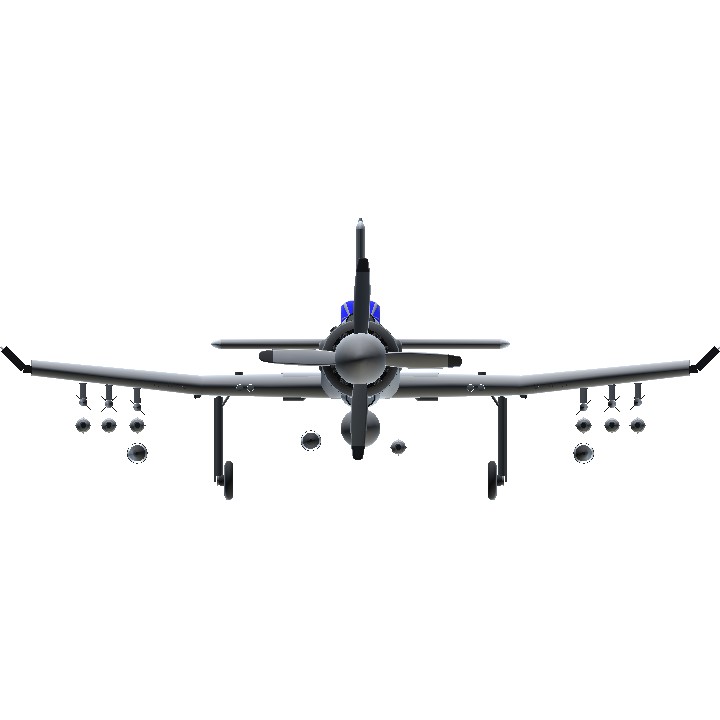
@Texasfam04
Thanks man! Initially it looked like an F4U Corsair (P6A and P6B) but this version (P6C) looks more like a radial engine-powered P-51D Mustang.
this plane is beautiful bud!
@jamesPLANESii
Ik! :D :D
@JohnnyBoythePilot Np! Also 2000 points!
@jamesPLANESii
Thanks!
@Empanadinho @JohnnyBoythePilot You're welcome, bro
@Empanadinho
Thank you!
Wow if this was a real plane, at altitude this could actually catch a Me-262 with full WEP. Me-262's top speed during WW2 was 559 mph while a P-51 mustang was 437 mph. So with WEP, this plane going at 540 mph (WEP on) is the fastest prop fighter during the '40s. ( ▀ ͜͞ʖ▀)
@JettStorm
@Razor3278
@ThePrototype
Thank you guys for the upvotes!